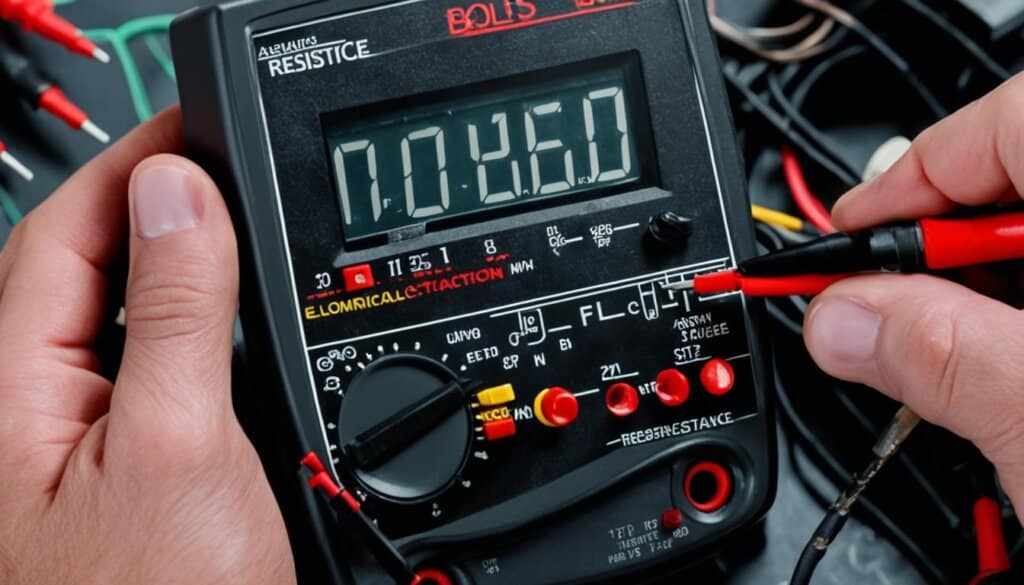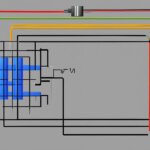Table of Contents
Welcome to our comprehensive guide on understanding ohms and electric resistance in the world of electronics. In this article, we will delve into the concept of electrical resistance, its importance, factors affecting it, methods of measurement, and how to control it in electrical systems.
Electrical resistance is the measure of opposition to current flow in an electrical circuit. It is named after Georg Simon Ohm, a renowned German physicist who formulated Ohm’s Law. Resistance is an essential element to consider in electrical circuits as it directly impacts the flow of current. Whether you’re a beginner in the field of electronics or an experienced technician, understanding ohms and electric resistance is fundamental to troubleshooting and maintaining reliable electrical systems.
What is Electrical Resistance and Why is it Important?
Electrical resistance is the measure of an object’s opposition to the flow of electric current. It is represented by the unit of measurement called ohms (Ω). Understanding electrical resistance is important because it allows us to control the flow of electricity in circuits, protect electrical components, and ensure devices receive the right amount of power.
Conductors, such as metals, have low resistance and allow electrons to flow easily, while insulators, like rubber and wood, have high resistance and slow down the flow of electrons.
By calculating resistance, we can determine the appropriate voltage and current for different devices and circuits. It helps us design and build efficient electrical systems that function reliably.
“Electrical resistance is a fundamental concept in electronics. It governs the behavior of electrical circuits and plays a crucial role in many technological applications.”
When dealing with high voltage and current levels, understanding and controlling resistance becomes even more vital to ensure the safety of both equipment and individuals.
Protecting Electrical Components
Electrical resistance is essential for protecting electrical components from damage. Too much current flow can easily surpass the capacity of a component, leading to overheating and potential failure. By controlling resistance, we can limit the current and prevent such incidents.
Resistors, which are designed to provide a specific level of resistance, are often used in circuits to safeguard sensitive components from excessive power flow. They act as buffers, absorbing excess energy and controlling the current that passes through the circuit.
Optimizing Power Distribution
Understanding electrical resistance allows us to optimize power distribution within an electrical system. By calculating the resistance of various components and wires, we can ensure that the right amount of power reaches each device.
A high resistance within a wire can cause voltage drops, resulting in reduced power reaching the intended device. This can lead to inefficient operation or even device malfunction. By using appropriate wire sizes and minimizing resistance, we can ensure efficient power transfer.
Controlling Current Flow
Electrical resistance enables us to control the flow of current in circuits. By using resistors strategically, we can adjust the level of resistance and regulate current flow according to specific requirements.
For example, in low-power sensing circuits, higher resistance values can be used to limit the current and prevent excess power consumption. On the other hand, in high-power applications, low-resistance conductors are utilized to ensure sufficient current flow.
Ensuring Device Functionality
By considering electrical resistance, we can ensure that devices receive the correct voltage and current for optimal functionality. Different devices have unique electrical requirements, and calculating the appropriate resistance helps match the power input to the device’s specifications.
For instance, electronic components like LEDs or microchips may require specific voltage and current levels to operate efficiently and avoid damage. By understanding and controlling resistance, we can ensure devices receive the necessary power without exceeding their limits.
Overall, electrical resistance plays a vital role in electronics and electrical systems. Its importance lies in controlling current flow, protecting components, optimizing power distribution, and maintaining device functionality. By considering resistance in circuit design and troubleshooting, we can ensure efficient and reliable operation.
Factors Affecting Electrical Resistance
Several factors influence the electrical resistance in a circuit. Understanding these factors is key to calculating and controlling resistance effectively. The main factors include the length and thickness of the wire, the type of material used, and the temperature of the circuit.
1. Length: The length of a wire plays a significant role in determining its resistance. Longer wires experience more resistance compared to shorter ones. This is because electrons have to travel a longer distance, encountering more collisions with atoms, which hinders the flow of current. Conversely, shorter wires offer less opposition to the flow of electrons.
2. Thickness: The thickness, or cross-sectional area, of a wire also affects resistance. Thicker wires have a larger conducting area, allowing more electrons to flow through. As a result, thicker wires have lower resistance. Thinner wires, on the other hand, have a smaller conducting area, leading to higher resistance.
3. Material: The material used in the wire significantly impacts its conductivity and resistance. Materials like copper, which are highly conductive, have low resistance. Copper is commonly used in wiring and electrical applications due to its excellent conductivity. In contrast, materials like steel have higher resistance, making them less suitable for conducting electricity efficiently.
4. Temperature: Temperature can also affect resistance. In general, as the temperature increases, the resistance of a wire also increases. This is because rising temperature causes atoms in the wire to vibrate more vigorously, creating more obstruction to the flow of electrons. As a result, the resistance increases with temperature.
Understanding the interplay of these factors allows us to accurately calculate and control electrical resistance in circuits, ensuring optimal performance and efficiency.
Factors Affecting Electrical Resistance
| Factors | Effect on Resistance |
|---|---|
| Length | Increased length leads to higher resistance. |
| Thickness | Greater thickness results in lower resistance. |
| Material | Higher conductivity materials have lower resistance. |
| Temperature | Resistance generally increases with higher temperature. |
Measuring Electrical Resistance
Measuring electrical resistance is an essential task in understanding and troubleshooting electrical circuits. It allows technicians to assess the condition of components and ensure proper functionality. Electrical resistance is measured in ohms (Ω), and one of the common tools used for this purpose is a multimeter.
To measure resistance, follow these steps:
- Set the multimeter to the ohm symbol (Ω) on the dial.
- Place the prongs of the multimeter on either end of the wire or component being measured.
- The multimeter will then display the value indicating the amount of resistance the electrical flow is experiencing.
By accurately measuring resistance, technicians can identify issues such as faulty components, loose connections, or damaged circuits.
Calculating Resistance
In addition to using a multimeter, resistance can also be calculated by measuring the voltage and current in a circuit and applying Ohm’s Law. Ohm’s Law states that resistance (R) is equal to the voltage (V) divided by the current (I): R = V / I.
“Voltage is the driving force behind electric current, while resistance determines the amount of current flowing through a circuit. By measuring both voltage and current, you can accurately calculate the resistance, providing valuable insights for troubleshooting and analysis.”
Example Calculation:
Let’s consider a circuit where the voltage is 12 volts (V) and the current is 2 amperes (A). Using Ohm’s Law, we can calculate the resistance:
| Voltage (V) | Current (A) | Resistance (R) |
|---|---|---|
| 12 V | 2 A | 6 Ω |
Based on the calculation, the circuit has a resistance of 6 ohms (Ω).
Measuring and calculating electrical resistance provide valuable information for diagnosing and troubleshooting electrical systems. It enables technicians to accurately assess the condition of components and circuits, ensuring efficient and safe operation.

Controlling Resistance in Electrical Systems
Resistance in electrical systems can be effectively controlled through the use of devices known as resistors. These components play a crucial role in regulating the flow of electric current by offering the desired level of resistance. Different types of resistors are available, each with its own unique characteristics and applications.
Precision Resistors
One type of resistor commonly used in electrical systems is the precision resistor. These resistors are known for their high level of accuracy in providing resistance with precise ohmic values. Precision resistors are used in circuitry where accuracy is critical, such as in sensitive electronic equipment and precision measurement devices. Their ability to maintain consistent resistance values ensures the proper functioning of electrical systems, minimizing errors and deviations.
Variable Resistors
Variable resistors, also known as potentiometers or rheostats, offer flexibility in controlling resistance. Unlike precision resistors, variable resistors have higher tolerance levels and can vary in resistance. They allow manual adjustment of resistance within a specific range, making them ideal for applications that require variable levels of resistance. Variable resistors are commonly used in devices such as volume controls, dimmer switches, and adjustable power supplies.
By utilizing resistors in electrical systems, resistance can be accurately controlled and adjusted, ensuring the smooth and efficient operation of circuits. The choice between precision resistors and variable resistors depends on the specific needs and requirements of the electrical system in question.
Importance of Optimizing Resistance in Electrical Systems
The optimization of resistance plays a pivotal role in ensuring the efficient and safe operation of electrical systems. By carefully considering factors such as wire size and length, resistance can be minimized, leading to a reduction in voltage drop and power loss.
In high-power applications, it is crucial to utilize large wires with lower resistance to deliver the required amount of power. Conversely, low-power sensing circuits benefit from smaller wires with higher resistance. This optimization of resistance ensures that devices receive the appropriate amount of power while preventing excessive power flow that may damage components.
Understanding and controlling resistance is of utmost importance when designing and working with electrical systems. By optimizing resistance, not only do we improve the efficiency and performance of electrical circuits, but we also enhance safety measures. Minimizing resistance reduces the risk of overheating and electrical malfunctions, promoting the longevity and reliability of the system as a whole.
FAQ
What is electrical resistance?
Electrical resistance is the measure of an object’s opposition to the flow of electric current. It is represented by the unit of measurement called ohms (Ω).
Why is understanding electrical resistance important?
Understanding electrical resistance is important because it allows us to control the flow of electricity in circuits, protect electrical components, and ensure devices receive the right amount of power.
How does resistance differ in conductors and insulators?
Conductors, such as metals, have low resistance and allow electrons to flow easily, while insulators, like rubber and wood, have high resistance and slow down the flow of electrons.
What factors affect electrical resistance?
Several factors impact electrical resistance, including the length and thickness of a wire, the type of material used, and the temperature.
How can electrical resistance be measured?
Electrical resistance can be measured using a multimeter, which is set to the ohm symbol (Ω) and placed on the wire or component being measured. It can also be calculated by measuring voltage and current in a circuit and applying Ohm’s Law.
What are resistors and how are they used?
Resistors are devices used to control resistance in electrical systems. They come in different types, including precision resistors and variable resistors, and they allow for accurate and adjustable resistance in circuits.
Why is optimizing resistance important in electrical systems?
Optimizing resistance ensures efficient and safe operation by minimizing voltage drop and power loss. It also ensures that the right amount of power reaches devices and prevents damage to components.













